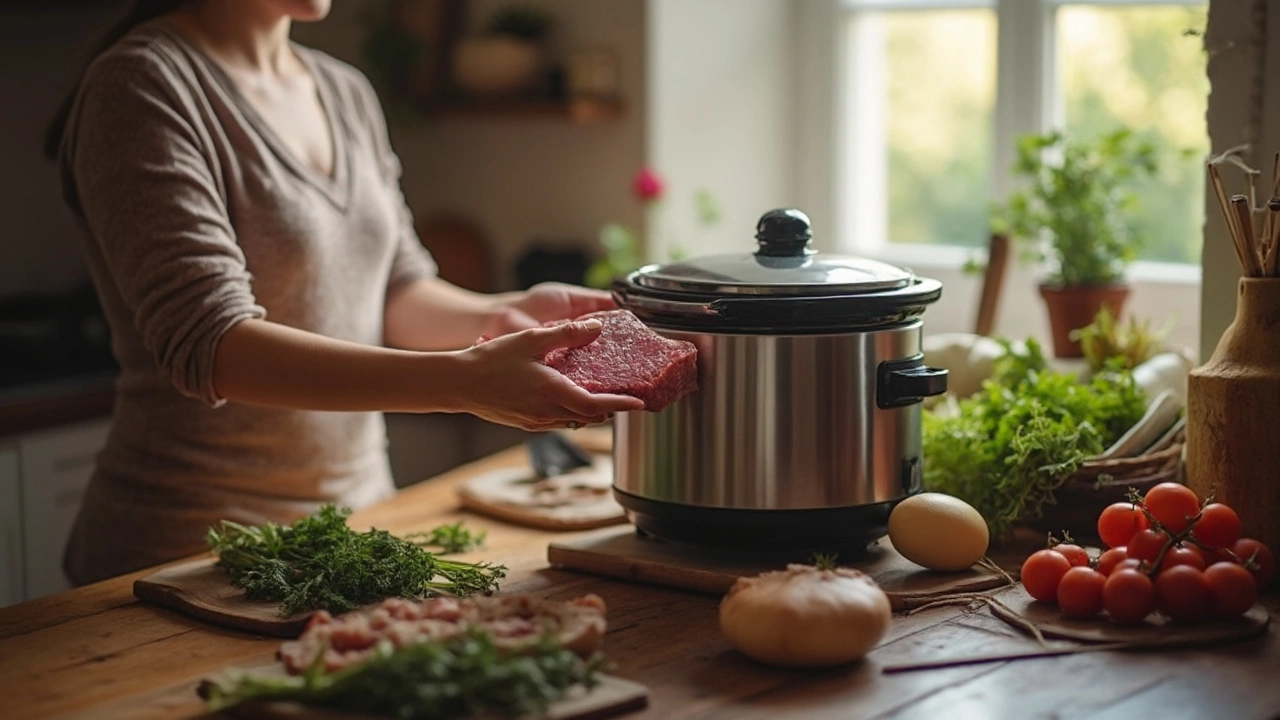Raw Meat: How to Handle It Safely and Cook It Right
Raw meat can turn a simple dinner into a flavor powerhouse, but it also brings a few risks. If you know the basics of storage, thawing, seasoning, and cooking, you’ll avoid nasty mistakes and get juicy results every time.
Store and Thaw Like a Pro
First thing: keep raw meat in the coldest part of your fridge, ideally on the bottom shelf. This stops drips from contaminating other foods. If you need to defrost, the safest route is the refrigerator – plan ahead and give it a day or two. In a pinch, a sealed bag in cold water works, but change the water every 30 minutes. Never thaw on the counter; room‑temperature spots let bacteria multiply fast.
Seasoning and Pre‑Cooking Prep
Season raw meat just before cooking. Salt draws out moisture, so if you salt too early the surface can get dry. A quick rub of salt, pepper, and a dash of olive oil is enough for most cuts. For tougher cuts, a brief marinate (30 minutes to a few hours) adds flavor without making the meat unsafe – just keep the bowl covered and chilled.
When you’re ready to cook, pat the meat dry with paper towels. Moisture is the enemy of a good sear; a dry surface gets a crust, while a wet one steams. Use a hot pan or grill, and don’t crowd it – the meat needs space to release steam and brown properly.
Cooking temperature matters. Use a meat thermometer: 145°F (63°C) for whole cuts of beef, pork, lamb; 160°F (71°C) for ground meat; 165°F (74°C) for poultry. Insert the probe into the thickest spot, avoid bone. When you hit the right temp, let the meat rest for a few minutes; juices redistribute and the meat stays juicy.
If you’re using a slow cooker, throw in raw meat directly – the low, steady heat will bring it to safe temperature. Just make sure the lid stays on and the cooker stays on low for the recommended time. Overcooking can make meat mushy, so follow recipe times closely.
Avoid Cross‑Contamination
Never reuse the plate or cutting board that held raw meat unless you wash it with hot, soapy water. Separate raw meat from ready‑to‑eat foods in the fridge, and keep raw meat wrapped tightly to stop juices from leaking. When you’re done, clean knives, forks, and countertops right away.
If you’re cooking for a crowd, set up a “raw zone” in the kitchen: a dedicated cutting board, a set of knives, and a separate trash bin for packaging. This tiny habit stops accidental mix‑ups and keeps everything tidy.
Quick Raw Meat Recipes
Here are two easy ideas that let you enjoy flavor without a lot of fuss:
1. Pan‑Seared Steak – Pat a 1‑inch ribeye dry, season with salt and pepper, and sear 3‑4 minutes per side in hot butter. Finish with a squeeze of lemon and let rest.
2. Slow‑Cooked Pork Shoulder – Place a seasoned pork shoulder in a slow cooker, add onions, garlic, and a splash of apple cider vinegar. Cook low 8‑10 hours, shred, and serve on tacos.
Both dishes rely on the basics we covered: dry surface, proper temperature, and no cross‑contamination.
Raw meat doesn’t have to be intimidating. Store it right, thaw safely, season just before cooking, and use a thermometer to hit the perfect doneness. Follow these simple steps and you’ll boost flavor, keep your kitchen safe, and enjoy tasty meals every time.
Raw Meat in the Slow Cooker: Safe & Simple Tips


